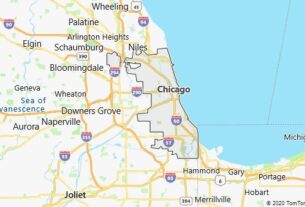In 1932, according to thesciencetutor, the Waterton Lakes National Park in Canada and the Glacier National Park in the USA were merged into the Waterton-Glacier International Peace Park, the world’s first international peace park. The park is about 4570 km² and is located on the east side of the Rocky Mountains and on the western edge of the North American prairie.
Waterton-Glacier International Peace Park: Facts
| Official title: | Waterton-Glacier International Peace Park |
| Natural monument: | since 1932 the world’s first »Peace Park« and since 1979 a transboundary biosphere reserve with glacial formations, Waterton Lakes National Park with an area of 525.25 km² and Glacier National Park with 4050.89 km²; first field studies in 1895 and 1922-23 by the National Museum of Canada |
| Continent: | America |
| Country: | Canada (Alberta) and USA (Montana) |
| Location: | Southwest of Alberta and northwest of Montana, southwest of Lethbridge and south of Calgary |
| Appointment: | 1995 |
| Meaning: | a corridor for genetic exchange between the two countries |
| Flora and fauna: | alpine tundra with the dryas octopetala and the poppy species Papaver pygmaeum, subalpine forest belt with the birch species Betula glandulosa, mountain forest with twisted pine, transition zone to the prairie with balsam poplar and prairie – 33 km² in Waterton Lakes National Park – with the fescue species Festuca scabrella; 870 vascular plant species such as Stellaria americana; 61 mammal species such as gray wolf, coyote, puma, beaver, American mink, baribal, around 200 grizzly bears, as well as bighorn sheep, mountain goat, bison, white tailed and mule deer; 241 species of birds such as peregrine falcon and white-bellied sea eagle |
The land of the shimmering mountains
Rising cliffs seem to burn in the glow of the setting sun, which conjures a flaming sea on mountains, forests, lakes and glaciers. In autumn, golden-yellow aspens rise from the dark forests on the slopes and show the way as glowing candles. Hundreds of waterfalls let their crystal clear, deliciously cold water drip and run downwards over countless cascades. The land of the “Shining Mountains” is called the area, and a mysterious silence often surrounds the meadows and forests. The wind catches in the tops of the pine trees. “Here you can forget your worries better than anywhere else on the continent,” said the committed environmentalist and naturalist John Muir, describing his feelings.
For over 8000 years, the indigenous people have come to the protected valleys, where they found food in abundance. In the 18th and 19th centuries, Blackfoot Indians hunted buffalo here and fished in the numerous lakes. At the beginning of the 20th century, the “white men” took the land and, just a few years before the outbreak of World War II, declared Waterton Lakes National Park in southern Alberta and the Glacier National Park in the US state of Montana to be the first International Peace Park of the world. It was to remain the only such park to this day.
These nature reserves are one of the last retreats of the last mighty ice ages, which 10 000 years ago covered the northern hemisphere with a thick, icy mantle and also covered the mountains of Waterton Glacier. Tectonic and sedimentary developments were responsible for the development of the local landscape, which took place over the past billion years. Sediments of mud and sand from what was once a huge prehistoric sea had initially settled and later pushed and folded towards the mountains. Three dozen glaciers are currently the scanty remnants of the last ice age in the United States. There are no longer any “ice age spots” on the Canadian territory of the park.
From the “Going-to-the-sun-road”, an 80 km long masterpiece of road construction, one has a magnificent view of the 2026 m high Logan Pass over the wide valleys left behind by the once mighty glaciers. Here you can almost touch the mountains, and the viewer is presented with an incomparable panorama. Long lakes lie deep down, created by the “glacier hand” and often only accessible via arduous paths.
The snow lasts until spring before bear grass covers the alpine tundra landscape. In early summer, the flower meadows are in full bloom and marmots whistle as they race. You can dream of Indians, trappers and explorers everywhere, when the mountains stand out like silhouettes from the horizon.
In Blackfoot Indian mythology, Napi, the creator of the earth, came to help the Blackfoot and then returned to the sun via this mountain. George Bird Grinnell called the park “the crown of the continent.” The two national parks are home to several hundred plant species, and provide food and shelter for native mammals such as the coyote, puma and baribal, and bird species such as the white-bellied sea eagle. But the habitat of elk deer, bighorn sheep and grizzly bears is severely threatened by the overexploitation of mining, oil, gas and wood processing companies.




